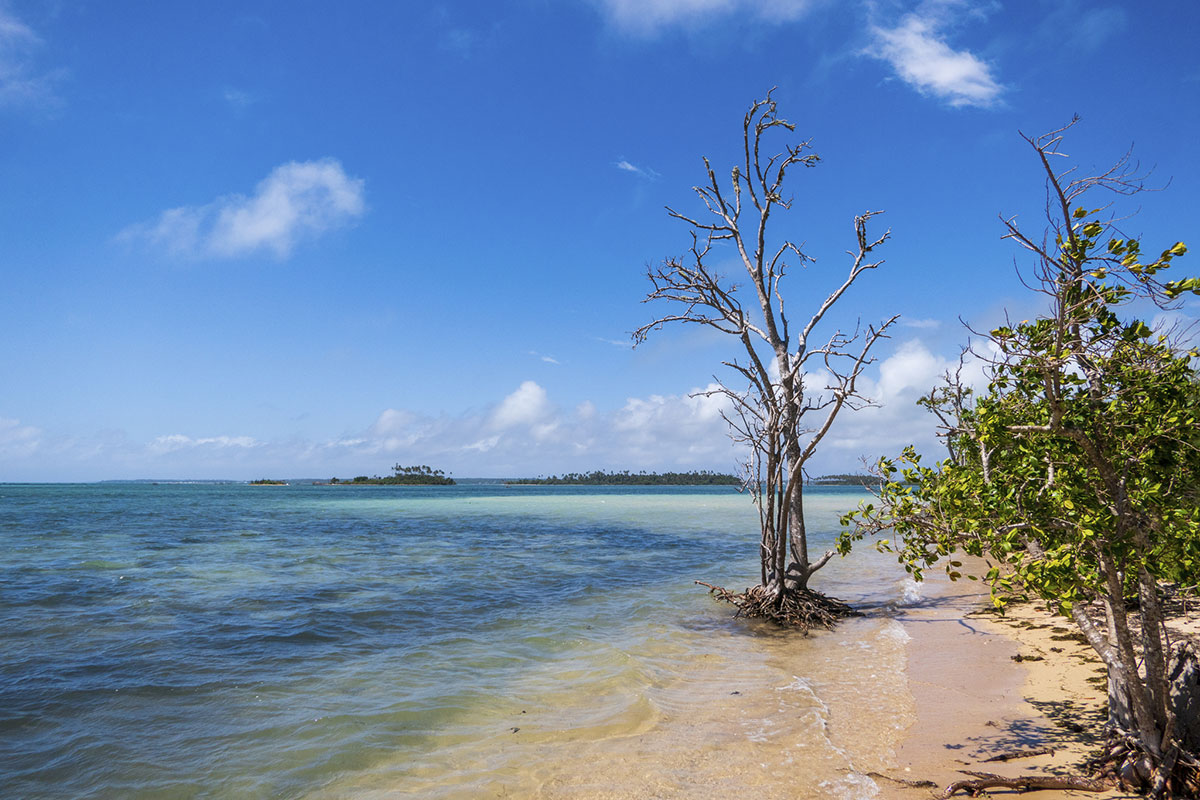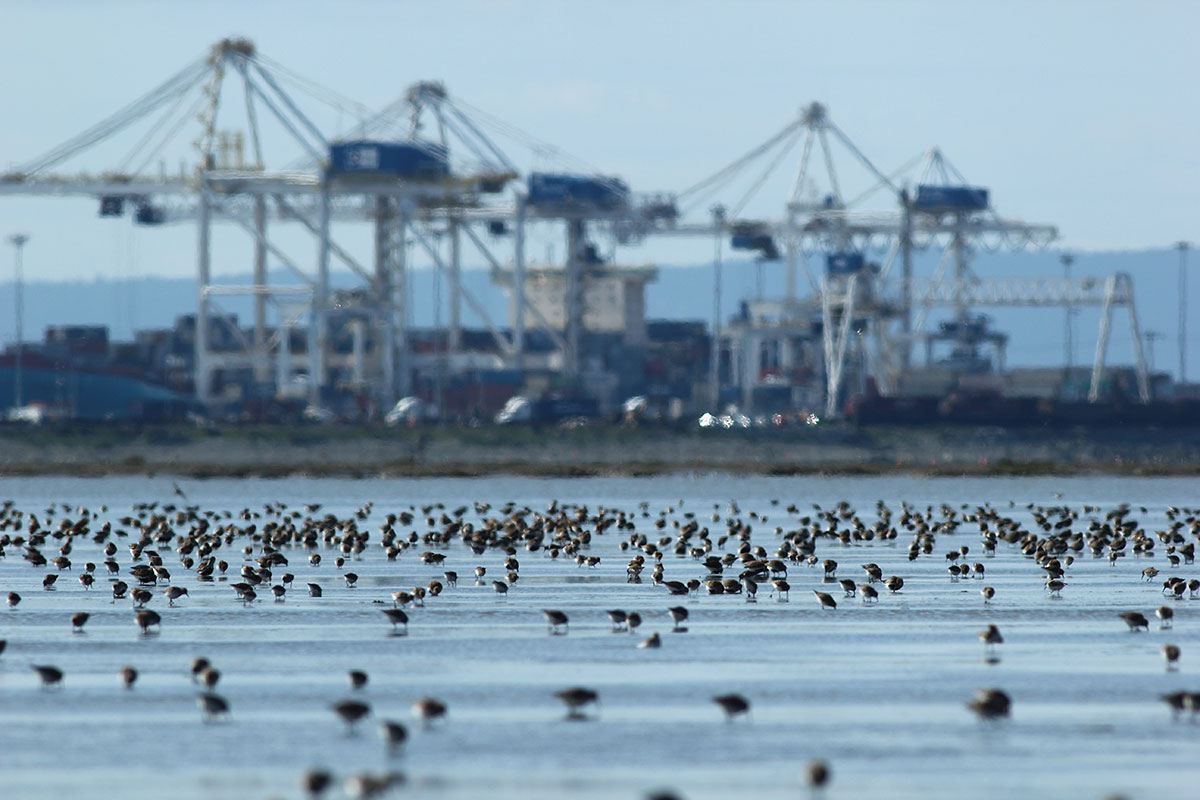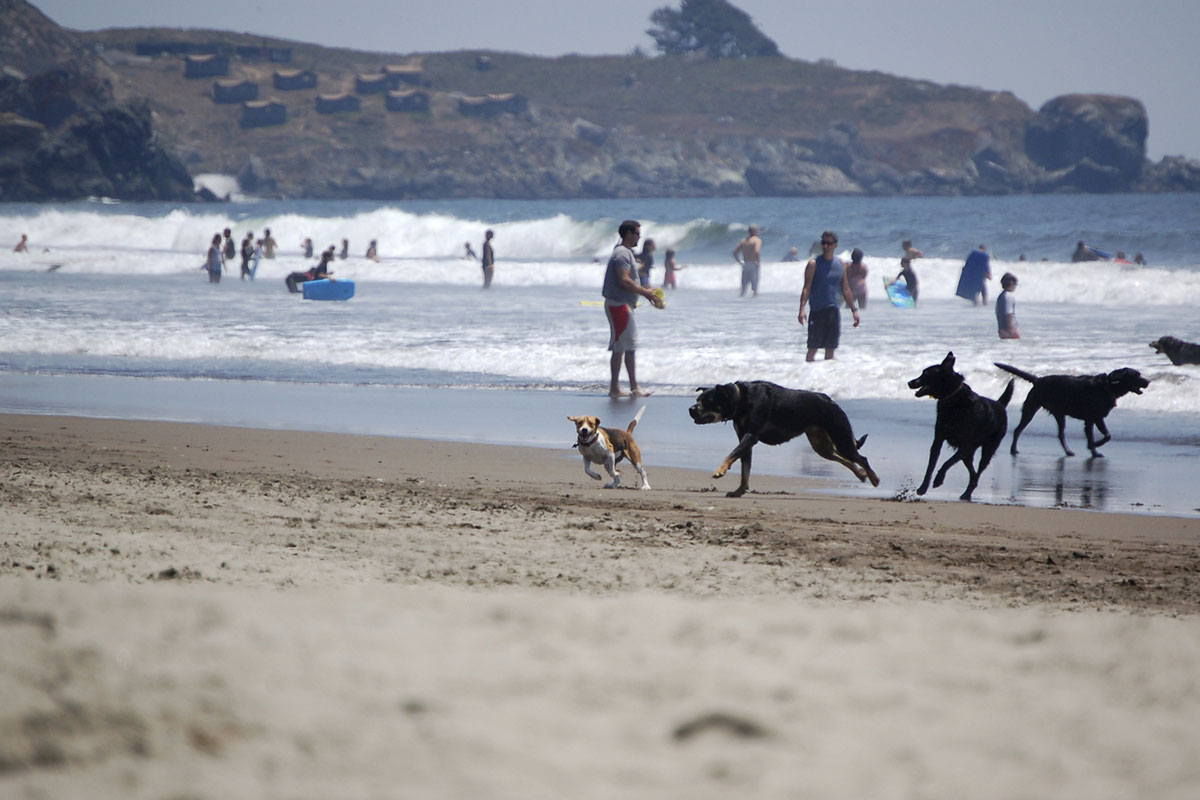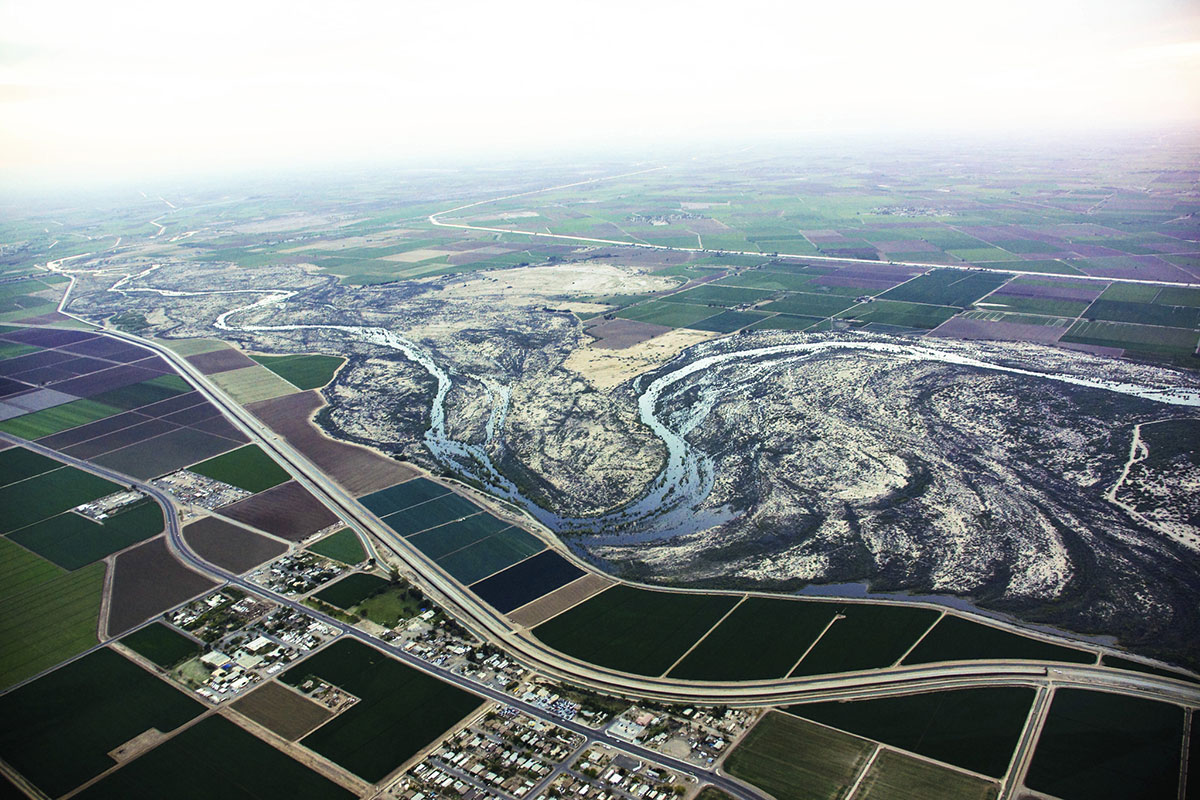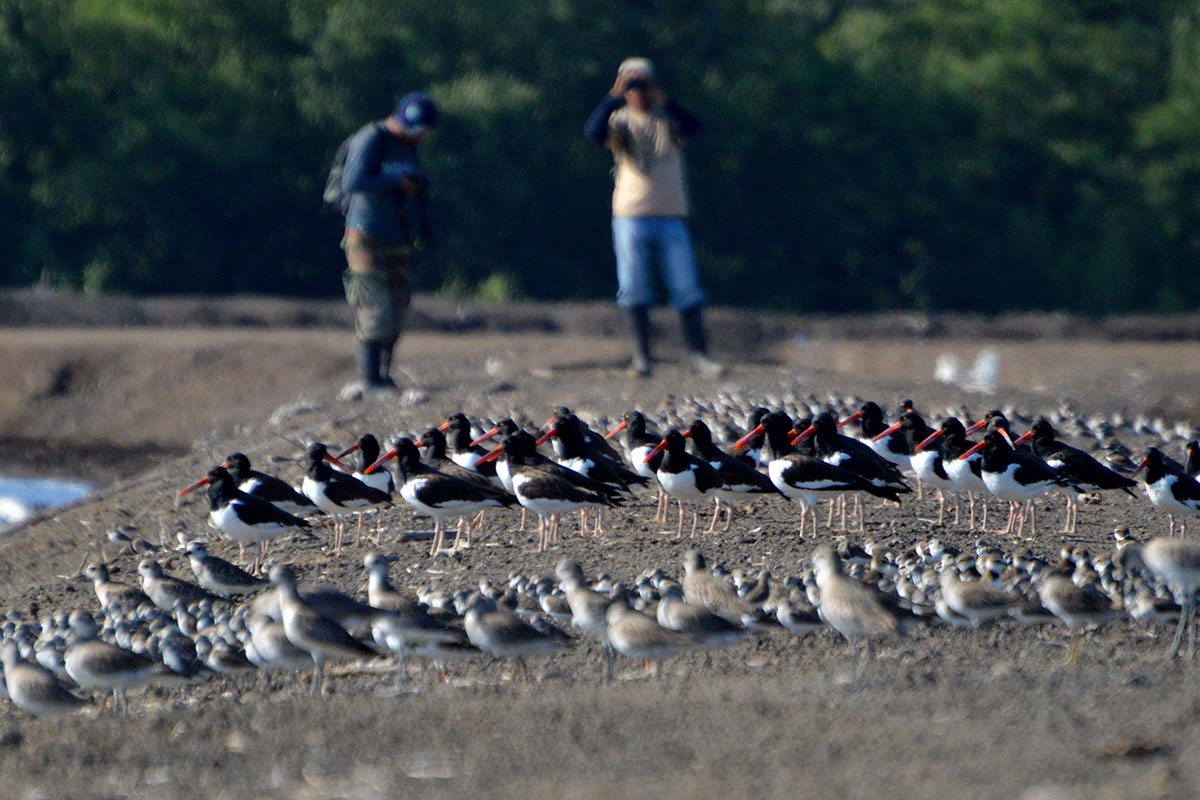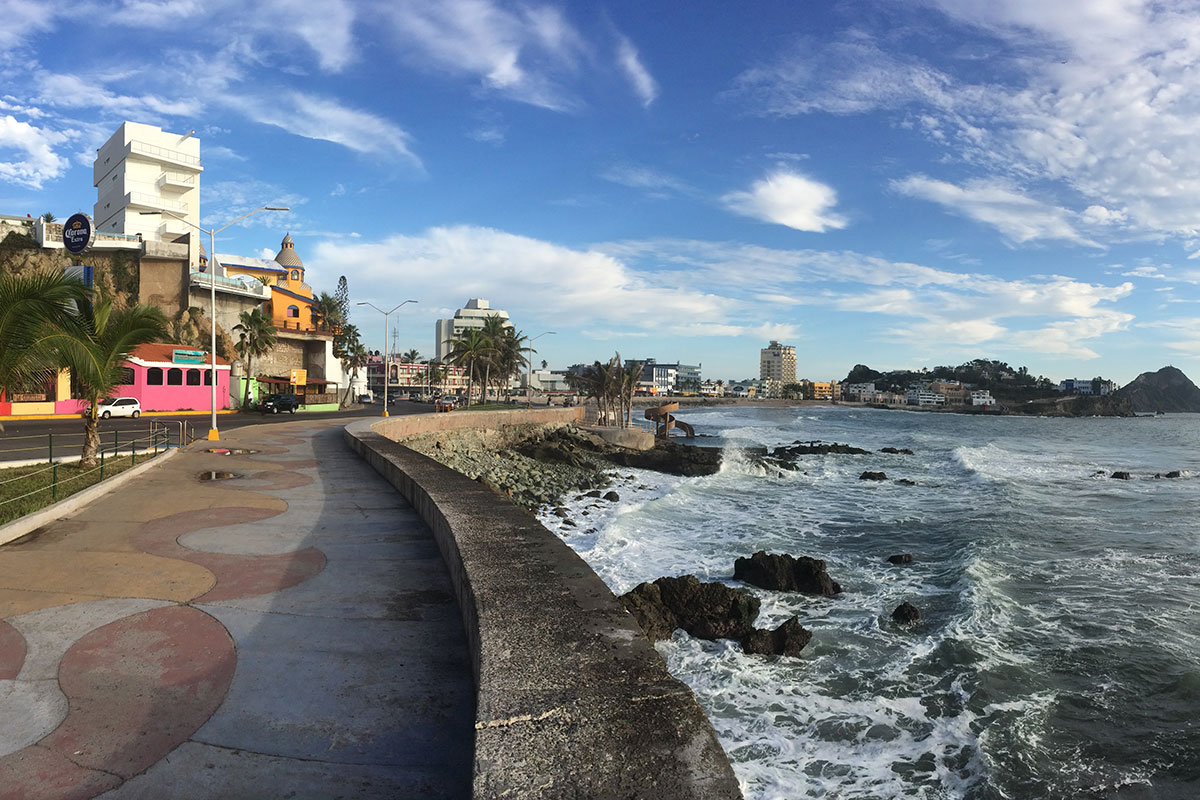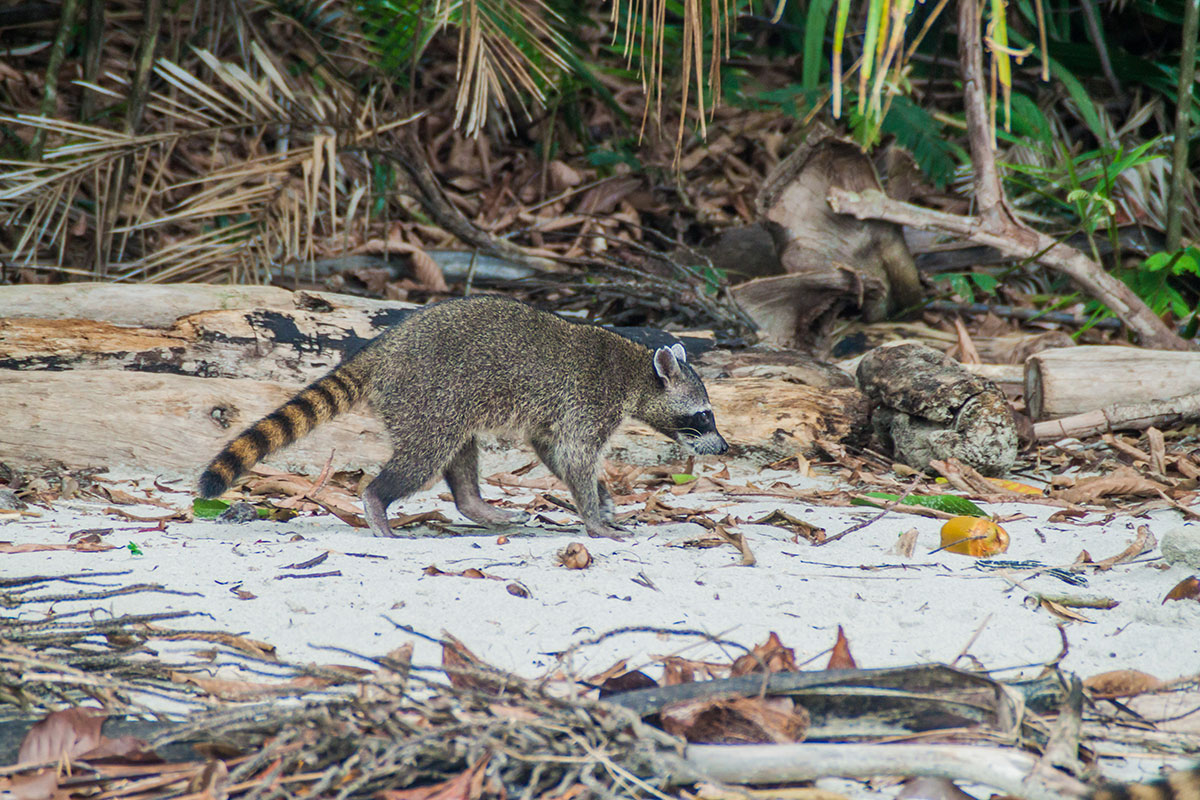The migratory nature of shorebirds makes them especially vulnerable to threats. Harmful changes to wetlands, grasslands, beaches, mudflats, mangroves and tundra require us to act now to conserve and restore these important habitats, which also provide homes and livelihoods for people. For example, protection of mangroves and salt marshes are critical because they are nursery grounds for fisheries. Tidal marshes, wetlands and grasslands sequester carbon and help mitigate the effects of climate change. Although the challenges are great, they are not without solutions.
Threats
Climate Change
Global climate change poses the greatest challenge to shorebirds throughout their ranges. Potential impacts include: 1) reducing the extent and quality of wetlands; 2) disrupting food webs; and 3) increasing frequency of severe weather events (e.g., drought, storms and flooding). These ecological changes, which directly affect shorebirds today, can be seen in earlier arrivals of breeding birds on their nesting grounds. Sea-level rise impacts the availability and quality of roosting and foraging habitat throughout the Flyway. Besides the direct loss of habitat caused by rising sea levels, climate-induced changes in the ocean could affect shorebird food resources.
Development
Shorebirds increasingly compete with people for space at coastal beaches, barrier islands, marshes, mangroves and interior saline lakes. Development to support growing economies, human populations and tourism leads to habitat loss and increased disturbance and predation at shorebird feeding, roosting and breeding sites. Coastal habitats are disproportionately impacted by the growing urban-suburban footprint, which is driven by the human desire to live and recreate near the ocean.
Disturbance from Recreational Activities
Human disturbance is recognized as a key threat in shorebird survival. Disturbance does not typically destroy habitat directly but causes disruption of foraging, nesting and resting. This can lead to increased competition for food resources, greater predation risk, reduced feeding opportunities and, ultimately, reduced fitness. Dogs increase levels of disturbance by chasing shorebirds.
Water Use and Management
Changes in human demand for water make the allocation of water resources for shorebirds and other wildlife a complex and important issue. Shorebirds in many regions rely on tactical water management to maintain natural and artificial habitats. Habitats used by shorebirds that are reliant on water management include irrigated or flooded agricultural lands, hypersaline natural lakes and evaporation ponds, irrigated pastures and managed fresh- and saltwater wetlands.
Aquaculture
Shrimp and shellfish production are the primary aquaculture operations affecting shorebirds in the Pacific Americas Flyway. Mangrove ecosystems, including associated saltmarsh and mudflats, have had shrimp farms developed adjacent to them in the past few decades. Shrimp farming can degrade habitat by altering wetland structure, increasing disturbance from farming activities and causing a loss of intertidal foraging and high-tide roosting habitat. However, some shrimp farms can be designed and operated to be more shorebird friendly, and changes in production practices can create alternative resting and foraging habitat for the benefit of shorebirds.
Shoreline and Wetland Modification
Shoreline and wetland modification are actions that convert natural habitats into those that are intended to preserve human infrastructure. Beach-nesting shorebirds are particularly vulnerable to the effects of shoreline modification, such as jetties and seawalls that resulting in loss of nest sites and changes in food resources. Loss of coastal wetlands is not easily reversed and not only negatively affects shorebirds, but also alters people’s livelihoods, safety and quality of life.
Invasive Species and Problematic Native Species
Invasive, exotic species and problematic native species pose substantial challenges to shorebirds across their ranges. Increases in introduced and native mammals and birds have a negative effect on breeding and migrating shorebirds. Increases in native predators, such as foxes, raccoons and avian predators (e.g., crows and gulls), can be devastating to breeding shorebirds and have been attributed to declines in some species. Free-ranging domesticated and feral animals (dogs and cats), cause a significant threat, because they destroy shorebird nests, kill chicks, chase foraging birds and disturb roost sites.
Moving Toward Action
Educate and influence decision-makers about using climate-smart conservation principles and nature-based approaches to improve coastal resilience to current and growing risks of climate change impacts to shorebirds and their habitats.
Strategies
Manage and Conserve Existing Habitats
Protection and management of terrestrial and aquatic habitats, on both public and private lands, is vital to sustain shorebird populations. Providing basic guidance and technical assistance to local managers and regional planning and management agencies could increase the priority of shorebirds as a management objective and ultimately improve and expand shorebird habitat.
Cultivate and Empower Conservation Constituencies
Building constituencies for shorebirds and conservation at all levels, politically and socially, advances implementation of other conservation actions of the Strategy and is critically needed to achieve success for shorebirds. A wide variety of individuals, communities, public policy decision-makers and global financiers has a vital role to play in shorebird conservation.
Create Conservation Initiatives with Natural Resource Industries
Development, adoption and implementation of best practices or standards for working lands, which minimize the impact on producers and benefit shorebirds, can help offset habitat loss caused by an expanding human footprint. Application of shorebird-friendly practices by producers within industries should be recognized and promoted by Strategy partners.
Strengthen Compliance and Enforcement
Many countries in the Flyway have laws and policies that protect shorebirds and their habitats, but enforcement is often lax. Ineffective enforcement often arises from inadequate resources or the lack of political will. An aware and motivated conservation constituency can be a powerful way to increase adherence to laws and policies.
Develop Environmental and Wildlife Protection Policies
Although much can be accomplished through voluntary, good-will conservation actions, a robust policy and legal framework is often needed to sustain conservation gains. Development of basic environmental laws, policies and regulations that benefit shorebirds should be linked to collateral human wellbeing benefits.
Improve Knowledge of Present and Future Habitats
To secure future shorebird populations, knowledge of how and why shorebirds use specific habitats is needed. Conservation actions can be implemented with existing data, but the level of knowledge varies widely among species, geographies, habitats and seasons. Monitoring the results of projects and actions will allow partners to adjust their strategic approaches.
Increase Partner and Stakeholder Capacity
Effective conservation action requires adequate institutional knowledge and enhanced capacity of partners and all stakeholders across the entire Flyway. A strong, collective-minded, professional partnership is essential for delivering the actions outlined in the Strategy, which will require engaging novel disciplines and societal sectors not traditionally engaged in shorebird conservation.

